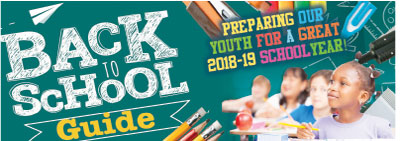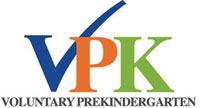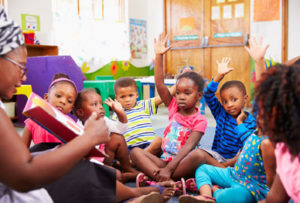 Early Learning in Broward County Florida
Early Learning in Broward County Florida
Broward County Public Schools (BCPS) believes Pre-Kindergarten is a valuable experience for three-and four-year-old’s. Children are able to develop academic and social skills that will prepare them for Kindergarten and beyond. The Pre-Kindergarten experience includes instruction built on social and emotional skills, rich play, toys, games, art, music and movement which complements explicit instruction focused on things like learning to count and matching letters to sounds and words which benefit children’s readiness for school.
High quality child care for children from birth to five years old is available in a variety of settings in Broward County. There are both free and fee-based programs available throughout the county.
The Early Learning Coalition of Broward County provides many resources through their website about community-based early learning centers in Broward County.
Broward 2-1-1 works with the Early Learning Coalition to provide information and resources to families, including information about child care and community-based early learning centers. Parents can access the Child Care Resource and Referral (CCR&R) Services through Broward 2-1-1 for assistance with locating an appropriate early learning center. Broward 2-1-1 also provides a variety of resources for parents including links to Family Guides for Parents and a Checklist for determining quality care.
Early Learning in Broward County Public Schools
Broward County Public Schools (BCPS) has a variety of early learning program models for children from birth to 5-years-old. Our programs are focused on meeting the needs of families and children by providing direct services in BCPS schools and also supports children enrolled in community early learning centers. This collaboration is essential to ensuring that ALL Broward County children are ready to learn when they enter Kindergarten.
Below are descriptions of the early learning programs available through Broward County Public Schools.
Birth to Three-Year-Old Programs
Early Head Start (EHS)
Early Head Start (EHS) is a federally-funded program that provides free educational and support services to children from birth to 3-years-old from low income families, including homeless, foster care, and students with disabilities. EHS targets the entire family but the support is tailored for pregnant moms, infants and toddlers up to age three. Participating children will transition from EHS into the Head Start preschool classrooms, then directly into Kindergarten.
To learn more about Early Head Start eligibility and enrollment, please visit the Head Start/Early Intervention website.
Pre-Kindergarten 3- & 4-year old’s
Head Start (HS)
Head Start (HS) is a federally-funded program that provides free educational and support services to children from 3-to 4-years-old from low income families, including homeless, foster care, and students with disabilities. The Head Start program provides free, comprehensive services to low-income families and their children. The Head Start program targets the entire family and the services include high-quality classroom instruction, health and developmental screenings, family engagement and goal setting.
Head Start (HS)/Integrated
Provides a full school-day of instruction in a classroom with typically developing students and students with disabilities. Head Start 3-and 4-year old integrated programs are available at selected schools.
To learn more about Head Start eligibility and enrollment, please visit the Head Start/Early Intervention website.
Preschool Exceptional Student Learning Support (Preschool ESLS)
Opportunities are available for preschoolers with disabilities whose educational needs can be appropriately served in the general education setting with minor support. Determination for enrollment is made by a multi-disciplinary team, including the parents. Preschool ESLS programs are available at selected schools.
Parents/Guardians of a child birth – age 5 that have an educational concern or suspect that their child may have a disability should contact the Florida Diagnostic Learning Resource Services (FDLRS)/Child Find at (754) 321-7200.
To learn more about the Preschool ESLS programs, please visit the Exceptional Student Learning Support website.
Voluntary Prekindergarten (VPK)
VPK is a State-funded program that provides Pre-Kindergarten instruction to 4 and 5-year-olds. VPK classes are available in both District classrooms and community-based early learning centers. The District VPK programs provide opportunities for both full day and half day classes. District models include:
o VPK/Enrichment (Title I Supported) – Provides free, full school day (6 hour) of instruction funds at selected Title 1 schools.
o VPK/Enrichment (fee supported) – Provides 3 hours of free VPK plus the option of an additional 3 hours of instruction funded through tuition.
o VPK/Early Learning Labs (Offered at select high schools in conjunction with the CTACE program) – Provides 3 hours of free VPK plus the option of an additional 3 hours of instruction funded through tuition. High school students enrolled in the Early Childhood program at the school work directly with the VPK students throughout the day.
o VPK/ESLS Integrated – Provides a full school day of instruction in a classroom with typically developing students and students with disabilities. Free and fee-supported VPK/ESLS Integrated program models are available at selected schools.
o Head Start/VPK Extended Day – Provides 3 free hours of VPK from 3 to 6 p.m., at participating locations.
To learn more about VPK eligibility and enrollment, please visit the VPK website.
Transitioning to Kindergarten
As children transition to kindergarten, comprehensive information is available at Elementary Learning.
 General Educational Development
General Educational Development
Our General Educational Development, GED® Prep program prepares you for academic and personal success. You’ll obtain the necessary skills required to pass the GED® Prep and earn a State of Florida High School Diploma. Our GED® Prep program strives to motivate you, not only to earn a high school diploma, but also to utilize those skills in the work-force or in continuing your education.
As a student, you’ll receive individualized instruction in preparing for the GED® exam. Your instruction centers on the subject areas measured: Reading/Language Arts (RLA), Mathematics, Science and Social Studies
To enhance your learning, you’ll be able to use computers and specialized software to increase skill and to explore college and careers.
The length of the time spent in this program is based upon your individual needs. This is an open-entry/open-exit program where you have the flexibility to enter the program at any time and progress at your own pace.
Cost: $30 per semester
Activity Fee: A $20.00 Student Activity Fee is charged one time per person, per campus, per school year. This fee is used to offset the costs of providing school security and campus-related activities.
Assessment Fee: A $15.00 Assessment (testing) Fee for ABE/GED® TABE Post testing is charged.
Convenient locations and class times: We offer classes at more than 60 locations throughout
Broward County. There are morning, afternoon, and evening available at different locations to meet the needs of adult students’ schedules.
To fill out an application, please visit browardfocus.com/apply.
Ready to get started? Just go to any of the following community schools, centers, or off-site locations listed below during registration hours. For locations, registration, and testing times, click here.
Need more information? Please call: (754) 321-7600 or email:
randy.mogen@browardschools.com
For Community School North locations:
(Coral Springs Middle Community School, Crystal Lake Middle Community School, Dave Thomas Education Center, Dillard High Community School, Fort Lauderdale High Community School, Northeast High Community School, Piper High Community School and J.P. Taravella High Community School)
richard.mcelhaney@browardschools.com
For Community School South locations:
(Bair Middle Community School, Hollywood Hills Community School, Lauderhill Middle Community School, Miramar High Community School, Nova Community School, Plantation High Community School, South Broward High Community School, Tequesta Trace Middle Community School and W.C. Young Middle Community School)
 Students Get Boost from Bright Futures Changes
Students Get Boost from Bright Futures Changes
By Lloyd Dunkelberger News Service of Florida
Florida “medallion scholars” will be among the biggest beneficiaries this academic year of the state’s efforts to expand financial aid for university and state college students.
As students enroll for their fall classes this month, the projected 46,000 medallion scholars will have their Bright Futures scholarships increased to cover 75 percent of tuition and fees, up from a prior scholarship a-mount that cover-ed about half of the cost. Tuition and fees average more than $210 per credit hour at the larger state universities.
In addition, the expansion will allow medallion scholars to use their merit-based scholar-ships for summer classes in 2019.
The expansion is part of a record $519 million Bright Futures program approved this year by lawmakers and Gov. Rick Scott. Funding for the medallion portion of the scholarships increased from about $85 million in 2017-2018 to about $190 million this year.
The funding and changes, which are included the new $88.7 billion state budget and related legislation (SB 4), also make permanent the expansion of aid for the top-performing Bright Futures students, known as “academic scholars,” to cover 100 percent of tuition and fees. They also receive $300 for the fall and spring semesters for the cost of textbooks.
The academic scholars, who will total about 48,000 this year, were able to use their Bright Futures aid for summer classes in 2018, which is the first time that has occurred since 2000-2001 budget year.
The Bright Futures expansion will largely benefit students attending Florida’s 12 state universities. But the scholarships also help students studying at Florida’s 28 state colleges, with more than 6,000 college students qualifying for medallion aid in 2016-2017 and about 1,750 qualifying as academic scholars.
Although state analysts are still refining their latest projections for the aid programs, preliminary data also showed more than 195,000 students will benefit from the state’s largest need-based aid, known as “student assistance grants.” The average award this year is expected to be just under $1,400 per student.
About 86 percent of that aid will benefit students attending public universities and colleges, and the remainder will help students at private schools and other post-secondary programs.
Meanwhile, more than 39,000 state residents attending private colleges and universities in Florida will benefit from the newly renamed “effective access to student education (EASE),” grants program. The maximum award for those scholarships, which total $137 million, will increase from $3,300 to $3,500 this academic year. EASE formerly was known as the Florida Resident Access Grant, or FRAG, program.
Schools projected to have the largest number of EASE grants include Bethune-Cookman College (2,300), Keiser University (7,000), Nova Southeastern University (2,150), Southeastern University (2,100) and the University of Miami (2,400).
Also, the Benacquisto scholarships, which cover full tuition and fees and provide a generous living allowance for National Merit scholars, will be expanded to include out-of-state students for the first time this year.
State analysts project more than 1,100 students in the program in 2018-2019, with approximately 59 out-of-state scholars.
The aid expansion comes as Florida continues to provide higher education to students at one of the lowest costs in the country. In 2017-2018, the College Board reported Florida’s average $6,360 in tuition and fees to attend a public four-year school ranked second-lowest in the nation, below the national average of $9,970.
 Assessing Learning Without a Test
Assessing Learning Without a Test
Challenging high school students to show their learning through a product of their own design brings out their creativity.
By Jessica Smith
If you teach in a high school setting, it seems natural that after students learn, you assess, but does assessing always mean giving tests? When I was in school, the answer was yes. However, we can challenge our students far more than any test can because tests are often meant to have students regurgitate information they have learned and don’t allow them to insightfully connect with and reflect on a text.
One of the strategies I use in my classroom to help my students not only demonstrate their understanding of a novel but also delve deeper into its moralistic nature and to answer the age-old question
“Why are we learning this?” is to give them a challenge they must complete as a group. I’ll describe how I did this with Harper Lee’s To Kill a Mockingbird, but you can do it with any novel. My students spend roughly four 90-minute blocks of class time on brainstorming and planning, creating, finalizing, and presenting their products.
I gave each group the same content standards, a question, and a list of what I call nonnegotiables; elements that every group’s product had to include. The question was one that could be used with any novel: How can we demonstrate our understanding of the novel in a creative way that uses evidence and includes the nonnegotiables? These nonnegotiables are about the content, which helps us establish our content criteria.
Top of Form
Bottom of Form
For my To Kill a Mockingbird challenge, the nonnegotiables were that the product must persuade the reader that mockingbirds, as a symbol of the destruction of innocence, are a motif addressed in the book, must include a written component, and must use three to five examples to address a driving quotation from Atticus Finch: “You never really understand a person until you consider things from his point of view… until you climb into his skin and walk around in it.”
DEMONSTRATING LEARNING IN ENGLISH LANGUAGE ARTS
The products had to be examples of how the students understood not only the motif of mockingbirds but the theme of walking in someone else’s shoes, demonstrating their ability to empathize with characters and to critically and insightfully connect to literature using textual evidence.
With this kind of challenge, once students know what is expected of them, we decide as a class what creative looks like and sounds like, designing quality criteria as seen in a Critical Skills Classroom, which is focused on four key methodologies: collaborative learning, experiential learning, problem-based learning, and standards-driven learning. I find that when students have an active role in how they will be graded, they’re more likely to become invested in their work. Once they understand the assignment and the quality criteria, students are free to brainstorm as a group. For about 10 minutes, I just walk around and listen. I like to hear them engage and problem solve before I start my facilitation.
When I start facilitating, I try to guide my students to think creatively and collaboratively, asking questions such as: “Given the nonnegotiables and quality criteria we established, what are some products that can be designed? How can you play to your strengths as individuals to collaborate as a group? If you had no limits, what could you do? How can this be modified to fit into our parameters?”
If students stray from the project at hand, I bring them back by asking facilitative questions such as: “Are all members being active members? If not, how can we ensure everyone has a voice in this project? Who is responsible for which part? Is there a timeline you have set as a group? Do you have a plan if you need more time?” Questions like these leave the students in charge of their learning while guiding them to find ways for them to address the challenge on their own.
Depending on the type of products students design, you can either do a carousel activity, where students visit one another’s work placed around the room, or presentations. Students assess their peers’ work using the single-point rubricthat I use myself to assess their work.
LEARNING THROUGH REFLECTION
One of the most important aspects of this challenge is the debriefing, where students can offer feedback to one another and about the activity itself. After all groups have presented and provided feedback to each other, we debrief on the process, the products, the group dynamics, and the nonnegotiables using class discussion and a Good/Improve T-Chart on the board. I use established debrief questions such as: How did you start solving the problem? How did you assign roles? Could we have made more efficient use of our timing? I also allow students to pose questions. While there are many ways to run a debriefing, my students all participated, so we were able to talk without an established, structured procedure.
In addition to the whole class reflective process, in order for students to do well and investigate their own process and critical thinking, I have them answer metacognitive reflection questions such as: How did your group approach this project? What role did you play? What would you do the same or differently next time?
My students have created strong products: dioramas that appear to change based on perspective, music scores, slam poetry, rap songs. When you teach your students to think outside of their comfort zones to demonstrate their learning, the possibilities are endless.
 Do No-Zero Policies Help or Hurt Students?
Do No-Zero Policies Help or Hurt Students?
No-zero policies spur serious—and productive—debate among teachers. We look at the big insights on both sides of the argument.
By Emelina Minero
With a No-zero grading policy, the glass is always half full.
The controversial grading policy—which is rising in popularity across the country—sets the lowest possible grade for any assignment or test at 50 percent, even when students turn in no work at all.
Schools systems like Fairfax County Public Schools and the Philadelphia School District have adopted similar approaches in recent years, arguing that they give all students a chance to succeed. These changes in grading policy are moving in tandem with national efforts to abolish letter grades and minimize the value placed on AP exams and SAT scores in favor of assessments focused on students’ skills, competencies, and work samples.
“I think grades oftentimes be-come an indicator of ‘completion’ and not necessarily a movement toward proficiency of content standards,” Jennie Frederiksen wrote on Facebook. “Teaching is hard work. Let’s have grades that reflect actual learning.”
But others feel differently. A no-zero grading policy allows students to do minimal work and still pass, pushes students forward who haven’t mastered the content, and doesn’t teach students the real-life consequences of not meeting their responsibilities, according to many of the 300 members of the Edutopia audience who reacted to our Facebook post “Is Our Grading System Fair?”
“We are creating a generation of entitled people who are hitting the colleges and the job market with major holes in their abilities to survive,” wrote Tom Bannan on Facebook, reflecting on the lack of forgiveness for poor or unfinished work in real-life work environments. And the actual cause of failing grades isn’t tough grading systems or pitiless educators, according to many who joined the Facebook thread. “Zeros don’t create holes,” said Lara Morales. “Kids choosing not to do their work creates holes.”
GIVING STUDENTS A SECOND CHANCE
For many in favor of a no-zero grading policy, it comes down to equity. Many educators argue that home-life factors create barriers to student learning, that low grades encourage struggling students to give up, and that teachers who can’t get their kids to comply use grades to punish rather than to assess knowledge.
There are a wide variety of home-life factors—like learning disabilities, learning English as a second language, or working a job to support their families—that impact students’ abilities to succeed academically, teachers noted. If a student misses a major assignment or assessment due to a home-life situation and receives a zero, that’s much more difficult to come back from academically than a 50.
“I work with students that don’t always know where they are sleeping or whether they will be eating when they go home,” says Polly Pennington Wilson. “Sometimes there are outside factors that affect student success. Grades run second to those concerns.”
But the equity argument was just one dimension of the criticism leveled at zeros. A significant number of teachers simply considered it draconian arithmetic—a grading strategy that, once triggered, torpedoed any record of progress and learning across the remainder of the grading period.
“If you are using a 100 point system, 0’s are unfair,” said Edutopia audience member Stephan Currence. “Which student has demonstrated greater mastery: student A: 100, 100, 100, 100, 0, or student B: 75, 80, 90, 80, 90? Mathematically, it is student B with an 83 average, but student A has clearly demonstrated greater mastery.” Even demonstrating consistent mastery for months can be undone by a single zero, in other words, and for many teachers that feels unjust.
Still, some educators assume that giving very low grades—zeros, in some cases—communicates to students that they need to work harder. That’s not how students see it, explains Sarah Duncan, the co-director of the University of Chicago’s Network for College Success, an organization that works with high schools to improve grades and graduation rates for entering freshman.
“Instead of working harder, the vast majority of students who get an F tend to withdraw, try less, and come to school less because they’re taking an F for what it actually stands for: failure,” said Duncan, refuting the argument that zeros create greater accountability in students. “They interpret an F as ‘You do not belong in this environment.’”
The research tends to corroborate that perspective: According to a 2014 literature review that explored the history of grading spanning almost 200 years, grades increase anxiety and decrease the interest in learning for students who struggle.
Finally, a few teachers worried that no-tolerance grading policies are often used as a classroom management strategy—and they’re the wrong tool for the job. “I feel like teachers are not being equipped with the tools to address behavior so they are using grades as a way to try to get kids to comply,” said Currence. “This does not help the child, or parent, understand where they are in terms of learning and what is necessary academically to succeed.”
JUST PASSING THROUGH
Several of the educators participating in the conversation had direct experience with no-zero policies, however, and felt that in practice they simply didn’t work well.
“[Our 50 policy] had unintended consequences that undermined instruction. Many students learned to subvert the system and would do nothing two quarters [of the] year, collect their 50s, and do well during the next two quarters and on the final,” said Rachel Kent of her school’s adoption of the policy. “In essence, they were smart kids who didn’t want to do the work (or didn’t want to come to school) and knew they could take half of a year off and still pass.”
The same logic drove Leominster Public Schools in Massachusetts to rescind their no-zero grading policy. “We really felt that after years of doing it that way, kids just weren’t learning to be responsible,” said Sky View Middle School Principal Tim Blake, as reported by the Sentinel & Enterprise News.
While teachers who spoke in favor of zeros recognized that the grade can dampen enthusiasm for learning, they suggested that no-zero approaches had a similar effect—with potential long-term consequences for students.
According to these educators, a no-zero grading standard allows students who haven’t mastered the content to slip by, and then move on to increasingly harder subjects, the next grade level, or even to college completely unprepared, putting students in a hole they might never climb out of.
“Why boost a kid’s GPA when they clearly don’t know the subject and lack determination?” said Alo Torres. “If they aren’t ready for the next grade, let them fail. It isn’t a punishment. On the contrary. It is help. It is making sure a child will be successful by not just passing them along before they are ready.”
According to Christina Arenas, a community college professor, high school students are often shocked when they get Ds and don’t move on or coast through. “If your boss gives you a deadline and you miss it, what happens?” asks Arenas. “At some point, our job as educators has to be to prepare them for the real world.”
MAYBE IT’S NOT A ZERO-SUM GAME
Given the complex range of factors to consider, perhaps both strict pro-zero and no-zero strategies are too inflexible. Giving students productive feedback requires nuance—all children are different.
Already, there is evidence that teachers are starting to find their way back toward the middle. According to our audience, some educators in schools with a no-zero policy give a slightly higher grade to students who put in effort. Teachers with more flexibility say they give slightly lower scores to students who don’t try at all. Others put students’ original scores on their papers, but mark 50 percent in their gradebook so students and their caregivers know the grade that reflects their actual understanding.
To help him remember the reason behind every 50, Jimmy Araujo, a high school biology teacher, uses place markers in his gradebook to note distinctions in student performance.
“NM stands for non-mastery. AB for absent. NHI for not handed in regarding homework assignments. DNA for did not attempt,” Araujo wrote on Facebook. “These allow me to communicate to students and parents better to distinguish where the student needs help.”
Overall, according to the experts, neither no-zero nor zero policies are silver bullets. Grading is more about the feedback provided and expectations set by the teacher to contextualize the grade.
“If you hand me an essay that’s really lousy, do I say ‘F, do better next time,’ or do I say ‘I’m not going to grade this. I expect a much higher quality of work from you. I wrote comments on it. Come to my room at lunchtime, and we’re going to work on it together, and then I need you to turn it in next week,’” Duncan said.
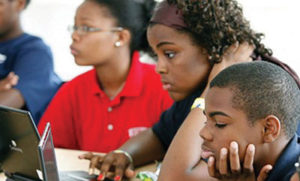 How Much Homework Is Enough? Depends Who You Ask
How Much Homework Is Enough? Depends Who You Ask
For teachers, parents, and students the homework debate is complicated
By Sir Ken Robinson & Lou Aronica
Editor’s note: This is an adapted excerpt from You, Your Child, and School: Navigate Your Way to the Best Education (Viking)—the latest book by author and speaker Sir Ken Robinson (co-authored with Lou Aronica), published in March. For years, Robinson has been known for his radical work on rekindling creativity and passion in schools, including three bestselling books (also with Aronica) on the topic. His TED Talk “Do Schools Kill Creativity?” holds the record for the most-viewed TED talk of all time, with more than 50 million views. While Robin-son’s latest book is geared toward parents, it also offers educators a window into the kinds of education concerns parents have for their children, including on the quality and quantity of homework.
The amount of homework young people are given varies a lot from school to school and from grade to grade. In some schools and grades, children have no homework at all. In others, they may have 18 hours or more of homework every week. In the United States, the accepted guideline, which is supported by both the National Education Association and the National Parent Teacher Association, is the 10-minute rule: Children should have no more than 10 minutes of home-work each day for each grade reached. In 1st grade, children should have 10 minutes of daily homework; in 2nd grade, 20 minutes; and so on to the 12th grade, when on average they should have 120 minutes of homework each day, which is about 10 hours a week. It doesn’t always work out that way.
In 2013, the University of Phoenix College of Education commissioned a survey of how much homework teachers typically give their students. From kindergarten to 5th grade, it was just under three hours per week; from 6th to 8th grade, it was 3.2 hours; and from 9th to 12th grade, it was 3.5 hours.
There are two points to note. First, these are the amounts given by individual teachers. To estimate the total time children are expected to spend on homework, you need to multiply these hours by the number of teachers they work with. High school students who work with five teachers in different curriculum areas may find themselves with 17.5 hours or more of homework a week, which is the equivalent of a part-time job. The other factor is that these are teachers’ estimates of the time that homework should take. The time that individual children spend on it will be more or less than that, according to their abilities and interests. One child may casually dash off a piece of homework in half the time that another will spend laboring through in a cold sweat.
Do students have more homework these days than previous generations? Given all the variables, it’s difficult to say. Some studies suggest they do. In 2007, a study from the National Center for Education Statistics found that, on average, high school students spent around seven hours a week on homework. A similar study in 1994 put the average at less than five hours a week. Mind you, I [Robinson] was in high school in England in the 1960s and spent a lot more time than that—though maybe that was to do with my own ability. One way of judging this is to look at how much homework your own children are given and compare it to what you had at the same age.
“Many parents find it difficult to help their children with subjects they’ve not studied themselves for a long time, if at all.”
There’s also much debate about the value of homework. Supporters argue that it benefits children, teachers, and parents in several ways:
- Children learn to deepen their understanding of specific content, to cover content at their own pace, to become more independent learners, to develop problem-solving and time-management skills, and to relate what they learn in school to outside activities.
- Teachers can see how well their students understand the lessons; evaluate students’ individual progress, strengths, and weaknesses; and cover more content in class.
- Parents can engage practically in their children’s education, see firsthand what their children are being taught in school, and understand more clearly how they’re getting on—what they find easy and what they struggle with in school.
SEE ALSO
Want to know more about Sir Ken Robinson? Check out our Q&A with him. “Q&A With Sir Ken Robinson”
Ashley Norris is assistant dean at the University of Phoenix College of Education. Commenting on her university’s survey, she says, “Homework helps build confidence, responsibility, and problem-solving skills that can set students up for success in high school, college, and in the workplace.”
That may be so, but many parents find it difficult to help their children with subjects they’ve not studied themselves for a long time, if at all. Families have busy lives, and it can be hard for parents to find time to help with homework alongside everything else they have to cope with. Norris is convinced it’s worth the effort, especially, she says, because in many schools, the nature of homework is changing. One influence is the growing popularity of the so-called flipped classroom.
Follow Commentary here
In the stereotypical classroom, the teacher spends time in class presenting material to the students. Their homework consists of assignments based on that material. In the flipped classroom, the teacher provides the students with presentational materials—videos, slides, lecture notes—which the students review at home and then bring questions and ideas to school where they work on them collaboratively with the teacher and other students. As Norris notes, in this approach, homework extends the boundaries of the classroom and reframes how time in school can be used more productively, allowing students to “collaborate on learning, learn from each other, maybe critique [each other’s work], and share those experiences.”
Even so, many parents and educators are increasingly concerned that homework, in whatever form it takes, is a bridge too far in the pressured lives of children and their families. It takes away from essential time for their children to relax and unwind after school, to play, to be young, and to be together as a family. On top of that, the benefits of homework are often asserted, but they’re not consistent, and they’re certainly not guaranteed.
Sir Ken Robinson is a professor emeritus of arts education at the University of Warwick in Coventry, England. He is the author or co-author of several bestselling books on creativity, passion, and educational transformation. Lou Aronica is the co-author, with Sir Ken Robinson, of four books, including Creative Schools: The Grassroots Revolution That’s Transforming Education (Penguin, 2015).
Follow the Education Week Commentary section on Facebook and Twitter. Sign up to get the latest Education Week Commentaries in your email inbox.
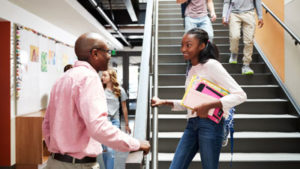 Strategies to Help Your Students Feel Heard
Strategies to Help Your Students Feel Heard
By Beth Pandolpho
One of the many wonders of being a teacher is that we affect children’s lives both in ways we understand and in ways we can’t begin to comprehend. But many of the demands of being a teacher can eclipse the fact that students are the center of our profession. We can easily become fixated on adhering to state standards, district initiatives, and departmental guidelines while we busily attend meetings, pore over lesson plans, and grade piles of student papers.
Yet we must remain focused on the needs of our students and remember a John Hattie phrase: “A positive, caring, respectful environment is a prior condition to learning.” Regardless of how busy we are, we cannot underestimate the importance of cultivating a classroom culture in which students feel valued and respected because if our students aren’t learning, the other tasks are meaningless. And one way we can build this solid foundation for learning is to listen to our students.
ELICITING STUDENTS’ THOUGHTS
What are you thinking? When I want to elicit responses from my students, I give them time to clarify their thoughts through writing. This time to reflect prepares them for class discussion. As hands go up, I say each student’s name and ask, “What are you thinking?” After I listen to the response, I follow up with questions such as, “Can you tell me more about that?” or “What led you to that conclusion?” Sometimes I’ll add my own thoughts, but often it’s enough just to hear theirs.
My students know that I care about what they think because their insights lead us all to deeper understanding. Fostering real conversations ensures that our classrooms become places of academic inquiry and collaboration founded on a sense of fairness and mutual respect.
Do you remember when _____? I often circle back to students’ contributions to show them that their thoughts and efforts matter to me. I’ll remind Sam how I loved his frequent and enthusiastic reading of Romeo this year, and I can always get a rise out of Hope if I compare a character to Odysseus—she’ll cringe and groan, “Ugh! He’s infuriating! I can’t stand him!”
Sometimes, I’ll repeat memorable lines from student presentations: “Katie, that reminds me of when you recited, ‘Too old to cry, too young to work full time,’ and Tom, when you read aloud, ‘I don’t know what I want to be or who I want to be.’” Students follow my lead in recounting favorite moments from the year, which builds community and strengthens relationships.
Can you give me some feedback? In an attempt to improve students’ experience in my class, I ask for their feedback during the year using exit tickets or questions in Google Classroom or Google Forms (here’s my end-of-year survey). I’ve learned that many students appreciate that I don’t give pop quizzes, and that they think my reading quizzes are too hard. I’ve learned that it helps if I use the due date option in Google Classroom because it sends them reminders, and that they wish we would spend more time reviewing common mistakes on essays because the feedback really helps.
LISTENING AS A WAY TO CREATE A POSITIVE CLASS CULTURE
Be responsive to students’ needs: The week prior to the school musical, many students stay at school every night until 11, and sometimes our football team plays away games on weeknights and doesn’t return to school until almost midnight. My students know I don’t want them staying up until 2 a.m. to complete their homework, so they’re not afraid to ask for an extension.
When we’re responsive to our students’ needs and they know they’ll be treated with kindness and respect, we’re teaching them to advocate for themselves.
Seek out the students you haven’t connected with: It’s important to try to forge a connection with each of our students, so when I realize there are some to whom I haven’t spoken, I know it’s time to reach out.
Sometimes I’ll greet the student when they enter the classroom and ask a question tailored to something I know about them to encourage a brief exchange. At other times, I may ask if they can help me with a task or ask their opinion about something we’re doing in class. Or if I’m doing conferences, I’ll spend a little more time with my more reticent students. It doesn’t have to be much—I simply try to create a moment when they’re speaking and I’m listening.
A tacit agreement must exist between teachers and students: Teachers will accept students for who they are, so students can feel safe to make mistakes—because mistakes are how we learn. Our students need to understand that we don’t measure their worth by the sum total of their grades or their behavior because we know them as individuals. And if we want our students to listen to us, the way to begin is to listen to them.
 Homeless Education Assistance Resource Team (HEART)
Homeless Education Assistance Resource Team (HEART)
The McKinney-Vento Homeless Assistance Act of 2001 governs the important work that Homeless Education Assistance Resource Team (HEART) conducts. It defines homeless students (families in transition) as those lacking a fixed, regular or adequate nighttime residence. This definition includes students (PreK-12) who are “doubled-up” sharing the housing of other persons due to their family’s loss of housing, economic hardship or similar reasons. The primary nighttime residence of students experiencing homelessness may also include motels, camping grounds, residing in emergency or transitional shelters and in some instances, living in cars, parks, abandoned buildings, bus stations or other public places.
The ultimate goal of the McKinney-Vento Act and HEART is to remove barriers that might otherwise prevent students experiencing homelessness from enrolling, attending and succeeding in school.
HEART is here to help by providing the following support services:
- School Supplies and Uniform Items
- Coordination of Transportation to School (Certain Rules Apply)
- Referrals to School and Community Services (e.g. School Social Worker, Family Counseling, Medical, Dental and Mental Health Referrals, etc.)
- Retrieval of Immunization
Records and State of Florida Birth Certificates
- After School Care services (K-8th)
- Summer camp opportunities
- Cap and Gown Rentals at No Cost to Graduating High School Students
- Verification Letters Needed to Apply for College and the FAFSA (Free Application for Federal Student Aid)
- Shelter-Based Supple-mental Academic Instruction
- Presentations to Community Agencies and Civic Groups
 Deaf or Hard of hearing Services
Deaf or Hard of hearing Services
Students who are eligible for deaf or hard of hearing services must:
Demonstrate a hearing loss that affects the student’s ability to participate in the educational process.
Demonstrate how the hearing loss affects the student’s development of academic skills, communication skills, or social skills.
Services for students who are deaf or hard of hearing include (based on individual need):
* A certified teacher of the Deaf or Hard of Hearing
* A certified Audiologist
* Certified Educational Interpreters
Based on the individual student’s needs, services can be provided in:
* A general education classroom
* A self-contained classroom for students who are deaf or hard of hearing
* A combination of general education classroom and a self-contained classroom
Students who are deaf or hard of hearing can be instructed in the following ways:
* Auditory/Oral Instruction – teaches students to develop hearing and speaking skills to develop spoken language for communication and learning.
* Total Communication – teaches students to develop hearing, speaking, communication skills using sign language for communication and learning.
Exceptional Student Learning Support Division at Arthur Ashe Campus, 1701 N.W. 23 Ave., Fort Lauderdale, Fla. 33311, (754) 321-3453, Terry Spurlock Curriculum Supervisor.
 The Head Start/EarlyIntervention Department
The Head Start/EarlyIntervention Department
The Head Start/Early Intervention Department houses the Head Start, Early Head Start, and Voluntary Prekindergarten programs. These programs pro-vide early education opportunities and comprehensive services to students Birth – five and their families.
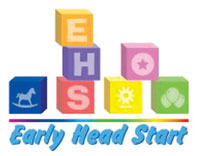 Head Start/Early Intervention Services
Head Start/Early Intervention Services
- Increase school readiness
- Provide high-quality education to Birth-5 students
- Enhance the knowledge and skills of Pre-K teachers, administrators, and support staff through strategic support
- Support families in the early care and education of their child
- Provide comprehensive services to children and their families
- Expand the number of high-quality Pre-K programs/opportunities throughout the district Head Start/Early Intervention 600 S.E. Third Ave., Fort Lauderdale, Fla. 33301 (754) 321-1961
Email:headstart@browardschools.com
Angela Iudica, Ph.D., Director
Ten Tips to Help Your Child Head Back to School
- Talk to your children about the upcoming school year: Communication is key in everything and nothing changes as it relates to our youth and their education. Find out how they’re feeling about the up-coming year. What things are they most excited about? What worries them most? What do they need from you in order to be successful? These are all questions that are sure to spark an engaging and thoughtful dialogue.
- Buy only the bare necessities to save for tutoring and academic enrichment: Back to school sales make it hard to resist racking up on new clothing, amazing shoes and glitzy back packs. However, be sure to only focus on the items that your children need. Stash away some of your back to school budget for any tutoring sessions that may be needed down the line or other activities that will aide in their academic development.
- Get physical, dental check-up & eye exams: Ensuring that your child is in optimal health sets them up for academic success. How well can a student perform in class if they are un-able to see the board or if they have a tooth ache? Good health also means less missed days allowing for more instructional time and the chance at a “perfect attendance” award.
- Set this year’s academic expectations: Were you proud of your child’s academic performance last year? Was there room for improvement? Set the standard early on and hold both yourself and your child accountable of accomplishing it.
- Establish a school night routine: Establish a set time frame and comfortable area in your home for your child to complete homework assignments and/or study. Get into the habit of reviewing what they are working on. Ensure that dinner isn’t too late, and that baths and showers are completed well before bedtime so that they have time to prepare clothing and back packs for the next day.
- Develop a procedure to ensure your child’s safe arrival to and from school: Not all parents are able to physically transport their children to and from school each day. If your little ones walk, take the bus or commute with friends; set up a routine to have them call you each day upon their arrival at school and once they get home safely. If they do not have their own cell phone, try to partner them with a friend or another sibling that does.
- Make education & learning your child’s #1 priority: Many students are involved in various extracurricular activities and often maintain very tight schedules. Make the commitment to put education first and do away with anything that distracts from that. Athletics should serve as a reward for meeting academic standards. In addition, expose your children to a variety of educational outlets and experiences; i.e. museums, trips to the library, etc.
- Review school material and information: Most schools have orientation and/or open house at the start of each new school year. Be sure to make yourself present to collect pertinent information regarding schedules, text books & teachers’ contact information. If you are unable to make it, partner with another parent that can attend and fill you in so that you aren’t left in the dark. #ItTakesAVillage
- Research the promotion requirements for your child(ren)’s grade level: Upon beginning each school year it is imperative that you know and understand what is required for your child to complete the grade that they are entering so that they are able to move on to the next. Speak with your child’s teachers to confirm if there are any standardized tests that must be completed successfully. Be aware of those testing days and do your best to help your child prepare. High school seniors have a set of requirements specific to graduation. Please check with your child’s guidance counselor.
- Have fun: Education doesn’t have to be daunting or dreadful. Show your children that it can be fun. Find ways to engage them in lessons that they may be working on. Youtube and Pinterest are both great places to search for ideas. Remember; a child educated only at school is an uneducated child.
Follow Village Life FL on Facebook & Instagram!
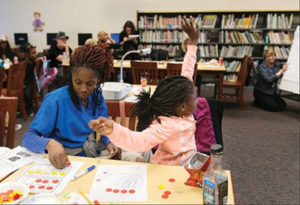
Do Parents See Math as ‘Less Useful’ Than Reading?
Survey finds parents rank subject lower
By Sarah D. Sparks
In the past 20 years, parents have taken to heart public-awareness campaigns urging them to read to their children every night. But math initiatives have not gained as much traction—even as emerging evidence suggests early math may be one of the most critical school-readiness skills.
A survey last month of more than 2,500 parents found that they generally rank math and science as lower in importance and relevance to their children’s lives than reading. Moreover, 38 percent of parents, including half the fathers surveyed, agreed with the statement “Skills in math are mostly useful for those that have careers related to math, so average Americans do not have much need for math skills,” according to the survey by the Overdeck and Simons foundations.
“Nobody is proud to say, ‘I can barely read,’ but plenty of parents are proud to stand up and say, ‘I can barely do math, I didn’t grow up doing well in math, and my kid’s not doing well in math; that’s just the way it is,’ “ said Mike Steele, a math education professor at the University of Wisconsin-Milwaukee who was not associated with the study.
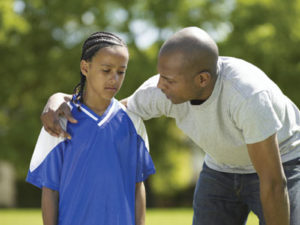 Here are some tips for being a supportive and positive parent of an athlete:
Here are some tips for being a supportive and positive parent of an athlete:
By Melissa Gollick, Sport Psychology
* Help you child understand wining isn’t everything. Make sure you help to emphasize the positive things they can gain from playing sports, such as camaraderie and self confidence.
*Play close attention to the influence your actions and words have on your child. Pressure and high expectations from parents can influence the satisfaction young athletes get out of their sport. Check in throughout the season and make sure you’re they are enjoying their sports.
 * Think before you act out in the stands or voice your opinion to a referee or member of the opposing team. Is this role model behavior?
* Think before you act out in the stands or voice your opinion to a referee or member of the opposing team. Is this role model behavior?
* If you do become upset over a referee’s call or a coaching de-cision, walk away from the event to cool down and collect your thoughts so your actions remain positive. Remember, you are not only a role model for your child, but you also represent his or her team as well.
* From the start of the season, take the time to understand the coach’s philosophy about team rules, playtime, travel, practices, etc.
* Respect the coach’s guidelines about boundaries, especially when it comes to communicating with him or her (email, texting, call limitations).
*Follow the limits set by the coach in regards to coaching from the sidelines or sharing your opinion about a specific coaching decision.
*Do not be afraid to ask appropriate questions at parent meetings or informational sessions. Chances are a couple other parents will benefit from your inquiry as well.
 Graduation Requirements Legislation
Graduation Requirements Legislation
Florida students entering grade nine may choose from one of four options to earn a standard diploma. They are
- 24-credit program*
- 18-credit, Academically Challenging Curriculum to Enhance Learning (ACCEL) option
- An International Baccalaureate (IB) curriculum
- An Advanced International Certificate of Education (AICE) curriculum Florida’s public high school graduation requirements are specified in the following sections of Florida Statute (F.S.):
- Section 1003.4282, F.S., Requirements for a standard high school diploma (effective July 1, 2013)
- Section 1002.3105, F.S., Academically Challenging Curriculum to Enhance Learning (ACCEL) options
* In addition to the four options available for students to earn a standard diploma listed above, Rule 6A-1.09963, Florida Administrative Code (F.A.C.), High School Graduation Requirements for Students with Disabilities, outlines two additional options that students with disabilities may complete within the 24-credit program. These include
- specific requirements for students with disabilities for whom the individual education plan (IEP) has determined that participation in the Florida Alternate Assessment is the most appropriate measure of the student’s skills and instruction in the access points is the most appropriate means of providing the student access to the general curriculum.
- specific requirements for a standard diploma for students with disabilities for whom the IEP team has determined that mastery of both academic and employment competencies is the most appropriate way for the student to demonstrate his or her skills.
2-1-1 BROWARD
* GENERAL HOTLINE 2-1-1 Broward, an information & referral line, provides a 24-hour, comprehensive help line and support service for individuals seeking crisis intervention assistance and/or information and referrals to health and human services in Broward County. An impressive database of information is used to provide community callers with current, relevant information regarding a wide variety of services within the com-munity. All calls are toll-free, confidential and anonymous from anywhere in Broward County.
* SPECIAL NEEDS and BEHAVIORAL HEALTH HOTLINE: Dial 2-1-1 or (954) 537-0211 www.211-broward.org *SNAC (SPECIAL NEEDS ADVISORY COALITION: Marissa Aquino maquino@cscbroward.org Children’s Services Council of Broward County (954) 377-1667.
FUNDED PROGRAM DIRECTORY:
CAPACITY BUILDING
Broward Training Collaborative Adamma DuCille aducille@cscbroward.org Children’s Services Council of Broward County (954) 377-1000 or visit their website at training.cscbroward.org.
Online Learning Center Adamma DuCille aducille@cscbroward.org Children’s Services Council of Broward County (954) 377-1000
* HANDS ON BROWARD: Dale Mandell dale@handsonbroward.org HandsOn Broward (954) 233-1295
* THE CAMPAIGN FOR GRADE-LEVEL READING: Sandra Bernard-Bastien sbernard@cscbroward.org
* KIDVISION/WPBT: Frances Hernandez Frances_Hernandez@wpbt.org WPBT Channel 2 (305) 424-4180
* SCHOOL HEALTH: Judy Perkins Sierra Lifecare, Inc. (954) 741-8160
* CRIBS FOR KIDS : Rachel Alexander ralexander@hmhbbroward.org Healthy Mothers, Healthy Babies Coalition of Broward County (954) 765-0550 ext. 339 In 2003,
* SWIM CENTRAL: Jay Sanford jsanford@broward.org Broward County Parks & Recreation Department (954) 357-SWIM www.watersmartbroward.org
* DROWNING PREVENTION: Cassie McGovern Cassie- McGovern@flhealth.gov
* Broward Sheriff’s Office: 2600 SW 4th Ave., Fort Lauderdale, FL 33315 (954) 765-4838
SYEP (SUMMER YOUTH EMPLOYMENT PROGRAM): Latema King lking@careersourcebroward.org CareerSource Broward (954) 202-3830
DPI works to prevent all forms of violence. As part of Broward Human Trafficking Coalition, we work to increase awareness of the human trafficking plague via a multi-tiered prevention and intervention. This slavery affects us all – both internationally and domestically. Did you know sex trafficking victims, on average, are first exploited by the age of 13? Did you know that Florida ranks in the top in terms of numbers of people enslaved? Look below the surface and recognize victims of human trafficking are among the people you see every day – maids, fac-tory workers, construction, farming, landscaping, hotel/tourist industries, panhandling, janitorial services, restaurant service – everywhere!
Expand All
If you think you have encountered a victim of human trafficking, call the National Human Trafficking Resource Center, HOTLINE 1-888-373-7888, open 24 hours a day/7 days a week – interpreters are available. In cases of emergency, call 911.
If you suspect child trafficking, you can also call 1-800-96-ABUSE.
Other reporting resources:
- U.S. Department of State, Office to Monitor and Combat Trafficking in Persons
- US Dept. of State Fact Sheets
- U.S. Department of Health and Human Services, Campaign to Rescue and Restore Victims of Human Trafficking
- United Nations Office on Drugs and Crime
 Preparing Our Children with Autism, ADHD, And Other “Special Abilities” to Transition into Middle School
Preparing Our Children with Autism, ADHD, And Other “Special Abilities” to Transition into Middle School
By Dr. Eric Nach, Ph.D., M.Ed., A.S.D. Certified
Making the transition from elementary to middle school is a huge milestone for all children and their parents. For children with Autism, ADHD, and other “special abilities”, this dramatic change of life is even more traumatic than for their NT (neuro-typical) peers. As life is full of many unforeseen challenges, the unpredictability of daily interaction is exceptionally difficult for these children and equally challenging for their families. We can plan and prepare for the change to middle school; however, experience shows that nothing is guaranteed when it comes to realities of life.
Parents and students will find the expectations of middle school teachers and students to be very different and more demanding than that of their elementary school counterparts. In our experience helping children and parents make the transition to the secondary school way of life, many factors contribute to student success and happiness as the intensity and impact of transitioning is different for each of our children with Autism, ADHD, and other “special abilities” and how families are prepared to handle them.
The primary goal of the middle school teacher is to help all students develop the skills necessary to be successful in middle and high school and beyond. Middle school teachers expect all students to be functioning at a higher level of independence compared to elementary school. We have found that the teachers who tend to be most successful with helping “our children” transition into middle school understand that virtually all new 6th graders still operate on a 5th grade or lower elementary school level emotionally, socially, behaviorally, and sometimes academically. Our children with Autism, ADHD, and other “special abilities” tend to have a greater variation of social and emotional maturity, while many excel academically. Most of “our children” need direct instruction on how to function in a middle school campus due to issues of “perception” and their challenges associated with “Theory of Mind” (understanding the thoughts and perceptions of others). Some of the skills they need to learn include: organization (as now they will have 6 or more independent classes), self-advocacy (how to get their needs met), socialization (quite often the children they grew up with and shared classes are no longer with them) and following new routines. Transitioning to many classes in a much larger campus and being with many more students and teachers will take a lot of planning, dedication and effort by everyone involved: parents, teachers, administrators, support staff, specialists, and the children themselves. In high school, the teachers are increasingly more content driven, they are focused on delivering content knowledge in particular subjects to help students obtain mastery, while having to adjust to many of the same transitioning issues as middle school stu-dents and teachers.
Teachers in elementary school are able to spend considerably more time with the students and get to know their learning styles and mannerisms. Many of our children with Autism, ADHD, and other “special abilities” are “visual learners” and benefit by being permitted to have practice with what organization looks like in a specific set-ting/classroom. They need to be shown how to utilize their materials. Their backpacks are often referred to as “the Black hole” because frequently schoolwork and other materials mysteriously disappear, often due to challenges with “executive functioning” many middle school students experience. Understandably, executive disfunctioning (lack of organization, planning, and follow-through) is more devastating in “our children” impacting all facets of their lives. They need to learn to transition from one class to another, to navigate the lunch room, to enter and exit the school campus, restroom etiquette, to find and use the busses or parent pick-up line, what to do before school starts and after school ends, and to be successful in all areas of the school, venue including the gym.
Our children with “special abilities” benefit from “real life” experiences to help practice adjusting into the middle school setting so they can become successful. They must utilize many social and academic skills about interacting with peers, teachers and others that need to be taught directly. Additional skills include knowing what a completed homework assignment, note-taking and class work look like, advocating for themselves, and studying and completing tests successfully.
Proper planning and follow-through can make the difference between a successful or devastating transition from elementary to middle school. Now is the time to make sure parents and students have their transition plan in order.
Eric Nach, Ph.D., is a Developmental and Behavioral Specialist and President of the “Support for Students Growth Center” in Boca Raton. At their center, Dr. Nach and his team of professionals provide social, behavioral and academic services for children, teens, young adults and their families. www.SupportForStudentsGrowthCenter.com
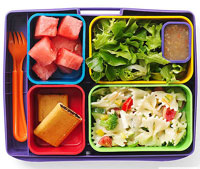 4 Tips For Packing A Healthy School Lunch That’s Also Cheap
4 Tips For Packing A Healthy School Lunch That’s Also Cheap
By Ashley Pontius
It won’t be long before kids will be heading back to school and for the parents to begin packing their lunches again. Organic food is expensive and peanut butter and jelly sandwiches only work for so long.
But Chef Zipora Einav (www.chefzipora.com), a chef to the celebrities and author of Recipe for a Delicious Life, says it is easy to stick to a budget on school lunches if you plan and prepare the meals at home in advance.
“Planning a menu and shopping with a list each week helps to manage your budget because you only buy what is needed rather than going to the store each day,” she says. “And if the kids are old enough, let them help you prepare their lunches. That is an excellent time to have discussions with your children about nutrition.”
Chef Zipora offers these suggestions for preparing a nutritious brown bag lunch for children throughout the school year:
For a healthier snack, offer baked vegetable chips or sweet potato fries (rather than buying the packaged chips)
Make home-baked chicken fingers or bake chicken to create a sandwich on whole wheat bread. Add lettuce.
Include seasonal fruit such as apples, pears and strawberries.
Does your child have a favorite vegetable like carrot sticks or celery? You can include a hummus dip (which is offered plain or comes in several flavors). You can also add whole wheat crackers such as Wheat Thins or Breton.
“Eating healthy does not need to be expensive,” Chef Zipora says, “and preparing the foods can be easier than most people think if they just prepare in advance and shop for healthy groceries.”
 Healthy School Lunches & Snacks
Healthy School Lunches & Snacks
Make school lunches healthy and fun with these easy brown bag lunch ideas. Transform classic lunches, from tuna to PB&J to turkey and cheese, into healthier recipes. Kids will also love the healthy snack ideas that will keep them full throughout the day.

